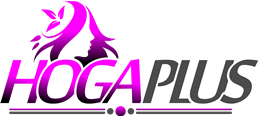The Art and Science of Blogging: Crafting Compelling Content in the Digital Age
In the ever-evolving landscape of digital communication, blogging remains a cornerstone of online content creation. From personal diaries to professional platforms, blogs serve as versatile mediums for expressing thoughts, sharing experiences, and disseminating information across the globe. As the internet continues to expand, so too does the significance of blogging in shaping online discourse and community engagement. In this article, we delve into the art and science of blogging, exploring its evolution, key elements, and best practices for success in the modern era.
Evolution of Blogging:
Blogging traces its roots back to the early days of the internet, with the emergence of online diaries and personal journals in the late 1990s. Initially a niche hobby for tech-savvy individuals, blogging rapidly gained popularity with the advent of user-friendly platforms such as Blogger and WordPress in the early 2000s. These platforms democratized content creation, allowing anyone with an internet connection to share their thoughts and ideas with the world.
Over the years, blogging has evolved from simple text-based entries to multimedia-rich content encompassing photos, videos, podcasts, and interactive elements. The rise of social media further transformed the blogging landscape, enabling bloggers to reach wider audiences and foster online communities through platforms like Twitter, Facebook, and Instagram. Today, blogging encompasses a diverse array of genres and niches, including fashion, food, travel, technology, business, and beyond.
Key Elements of Successful Blogging:
While the nature and focus of blogs may vary widely, several key elements contribute to their success:
- Compelling Content: At the heart of every successful blog lies compelling content that captivates and resonates with the audience. Whether it’s insightful commentary, engaging storytelling, informative tutorials, or entertaining anecdotes, compelling content is the lifeblood of blogging.
- Authentic Voice: Authenticity is key to building trust and connection with readers. Bloggers who speak with sincerity and transparency, sharing their genuine thoughts and experiences, are more likely to attract and retain an audience.
- Consistency: Consistent publishing is essential for maintaining reader engagement and building momentum over time. Establishing a regular posting schedule helps bloggers stay organized and ensures a steady flow of fresh content for their audience.
- Visual Appeal: Incorporating visually appealing elements such as high-quality images, videos, infographics, and interactive media enhances the overall aesthetics and readability of a blog. Visual content not only attracts attention but also helps convey information more effectively.
- SEO Optimization: Search engine optimization (SEO) plays a crucial role in driving organic traffic to a blog. By optimizing content for relevant keywords, using descriptive meta tags, and building backlinks from reputable sources, bloggers can improve their visibility in search engine results and attract more visitors.
- Engaging Community: Building a supportive and engaged community around your blog fosters loyalty and advocacy among readers. Encouraging comments, responding to feedback, and actively participating in online discussions contribute to a vibrant and interactive blogging community.
Best Practices for Modern Blogging:
In today’s competitive digital landscape, staying ahead of the curve requires a strategic approach to blogging. Here are some best practices to help bloggers thrive in the modern era:
- Define Your Niche: Identify a specific niche or topic area that aligns with your interests, expertise, and target audience. Focusing on a niche allows you to establish yourself as an authority and attract a dedicated following within that niche.
- Create a Content Calendar: Plan your content strategy in advance by creating a content calendar outlining topics, publication dates, and promotional activities. A content calendar helps maintain consistency, manage deadlines, and ensure a diverse mix of content formats.
- Invest in Quality: Invest time and resources into producing high-quality content that offers unique value to your audience. Whether it’s conducting in-depth research, honing your writing skills, or investing in professional design and photography, prioritize quality over quantity.
- Leverage Multimedia: Experiment with different multimedia formats to enrich your content and cater to diverse learning preferences. Incorporate visual elements, audio podcasts, video tutorials, and interactive features to engage readers in new and exciting ways.
- Foster Engagement: Cultivate a sense of community and interactivity by encouraging reader participation and feedback. Pose questions, conduct polls, host Q&A sessions, and actively engage with comments and social media mentions to foster a sense of belonging and connection.
- Adapt to Trends: Stay informed about emerging trends, technologies, and platforms shaping the blogging landscape. Experiment with new formats, trends, and social media platforms to stay relevant and expand your reach to new audiences.
Conclusion:
In conclusion, blogging continues to be a dynamic and influential medium for communication, expression, and community-building in the digital age. By embracing the art and science of blogging, creators can leverage their creativity, expertise, and passion to engage audiences, drive meaningful conversations, and make a lasting impact in the online world. Whether you’re a seasoned blogger or just starting out, the key to success lies in authenticity, consistency, and a commitment to delivering valuable content that resonates with your audience. Happy blogging!







